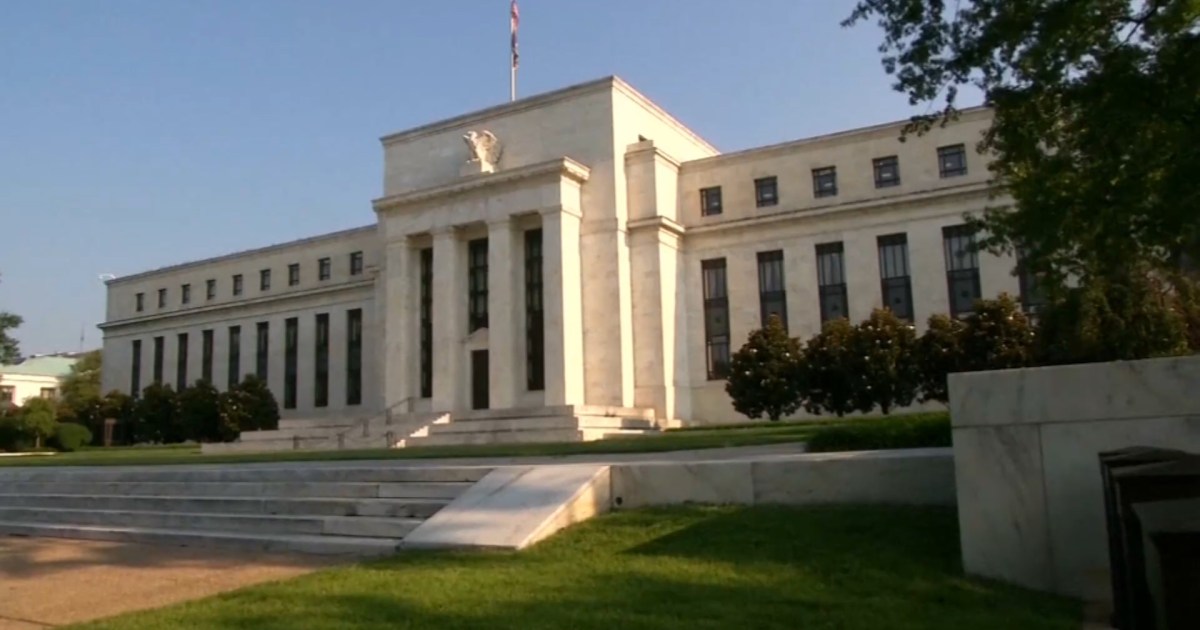Just two years ago, central banks around the world were striving to stimulate their markets through support packages and interest rates close to zero, to face the economic consequences of the outbreak of the Corona virus.
Today, central banks - especially the United States, eurozone countries and advanced economies - are paying some of the price resulting from stimulus packages and pumping liquidity into the markets, and geopolitical factors that have caused an increase in inflation.
At the highest level since December 1981, the United States recorded increasing rates of inflation, reaching 8.5% during last March, amid efforts by the Central Bank to curb inflation.
raise interest
One of the most prominent tools to curb inflation is raising interest rates, which the US Federal Reserve did last March, and it is heading to repeat it more than once in 2022.
The high inflation at the world level - especially the prices of basic commodities such as food, which recorded unprecedented historical levels, according to the Food and Agriculture Organization of the United Nations (FAO) - comes at a time when the markets have not yet recovered from the consequences of Corona.
Today, central banks fight on two fronts through the same tool, which is interest rates, which lead to a reduction in the money supply within the markets, and its transfer to the banks in the form of deposits, so that their owners benefit from the interest rates on them.
On the other hand, these banks are working to address the economic and monetary imbalances caused by the Corona outbreak, and one of the most prominent tools to stimulate markets is reducing interest rates, which contradicts the solution to the high inflation crisis.
Here, central banks stand at a crossroads. Do they win over the consumer and curb high inflation, or do they stimulate markets and investments and create new job opportunities by keeping inflation rates low?
Central banks are standing at a crossroads. Are they winning over the consumer and curbing high inflation, or stimulating markets and investments and creating new job opportunities by keeping inflation rates low?
curb inflation
Indicators show that central banks will solve the inflation crisis, as a priority, because consumer prices are a stressful factor for economies, purchasing power, and consumers, especially in developing and emerging economies.
The majority of banks around the world raised interest rates last March, after the US Federal Reserve’s decision to increase them, but the latter is heading to implement more than 4 increases this year, and this poses a threat to the rest of the global markets.
Raising interest rates may curb inflation, but on the other hand, it will be a disincentive to stimulate markets, because the cash liquidity needed to invest in the markets and provide new jobs and wages will be transferred to banks in the form of deposits.
stagflation
Global fears have risen that raising interest rates, and the failure of central banks' efforts to curb inflation, will lead to the emergence of the so-called stagflation.
Stagflation is an accelerated rise in the prices of basic commodities in particular, which is what is happening today, accompanied by a sharp decline in demand, that is, high prices and low demand.
Inflationary stagnation will cause a state of weak demand for consumption, while this weakness does not lead to a reduction in commodity prices, due to the increase in the cost of production, and the result is a halt to the wheel of production and consumption together.
In the United Kingdom, for example, British consumer and business confidence declined in March, amid rising inflation, indicating the possibility of stagflation in the coming months.
The UK Consumer Confidence Index, a measure of how people view the state of their personal finances and the broader economic outlook, fell 5 points to minus 31 in March, the fourth consecutive decline and the lowest reading in 17 months.
Stagflation paints an unwelcome picture for the economy in the coming months, as stagflation refers to uncommon periods of slow growth combined with high inflation.
The Russian attack on Ukraine triggered a severe inflationary shock, driving up prices as energy supplies were threatened and household and business incomes squeezed, as basic goods became more expensive.
In numbers, the oil price has risen by 60% this year to an average of $107 a barrel, from $66 in April 2021.
As for the prices of staple foods, the FAO Food Index rose 33.6% during last March on an annual basis, recording 159.3 points, the highest historical level for the index since its inception in 1990.

